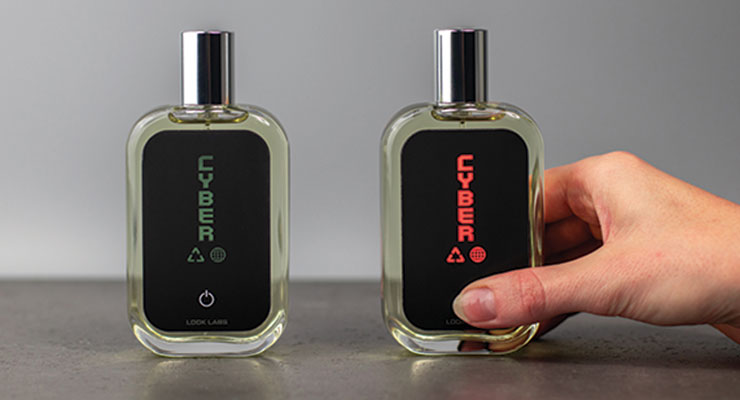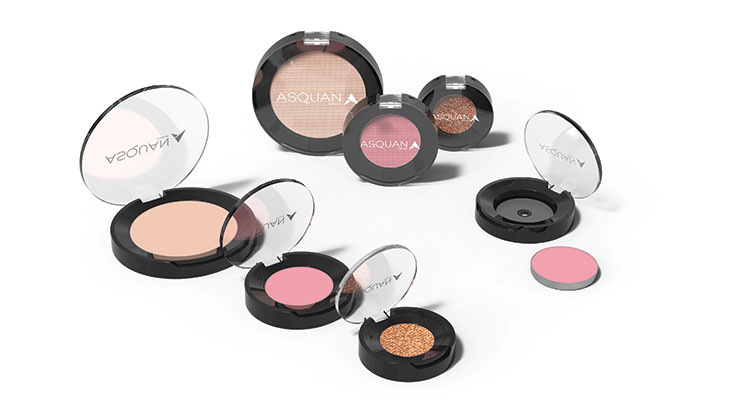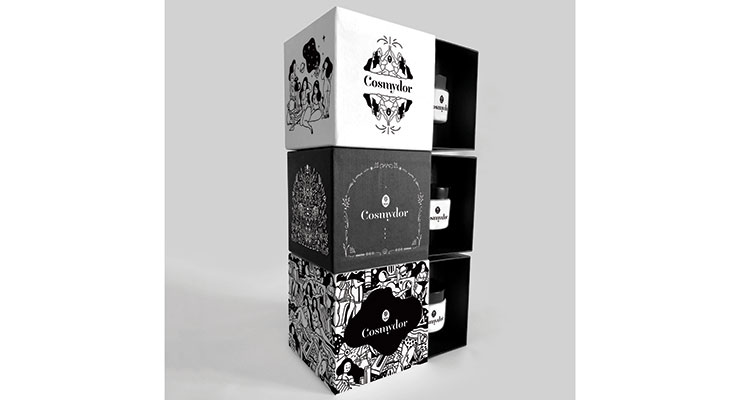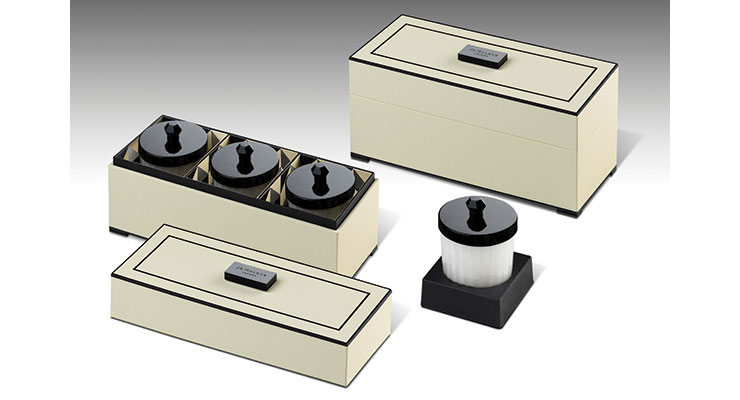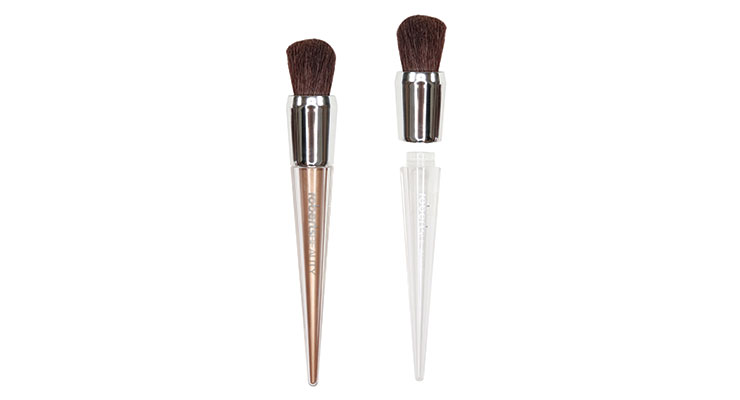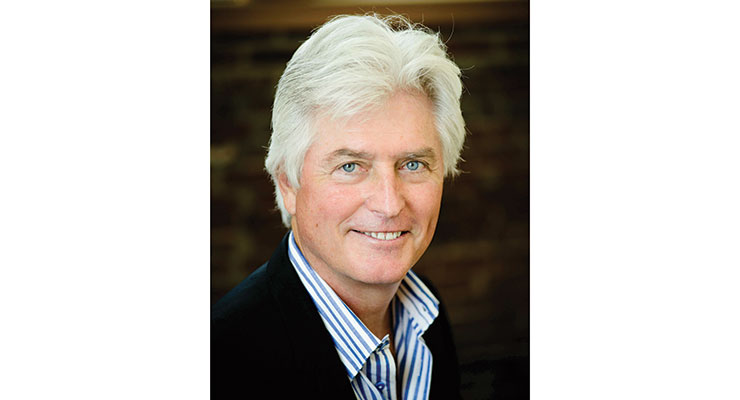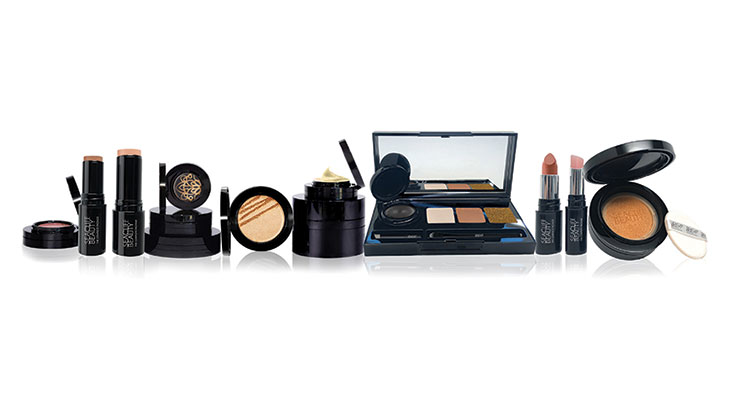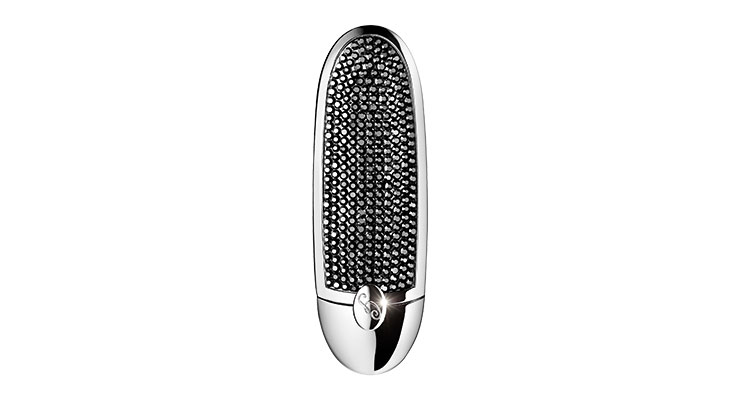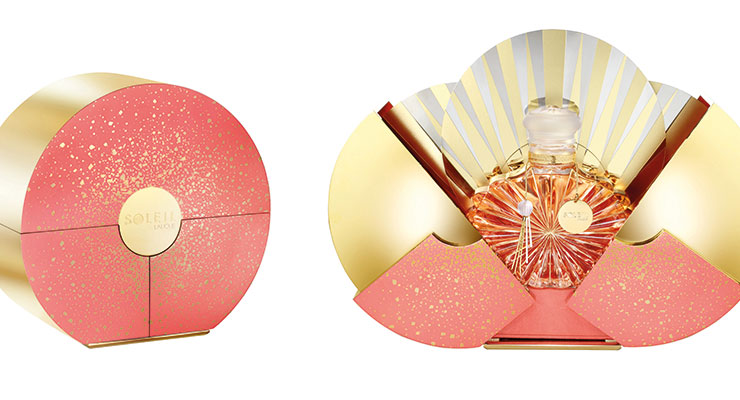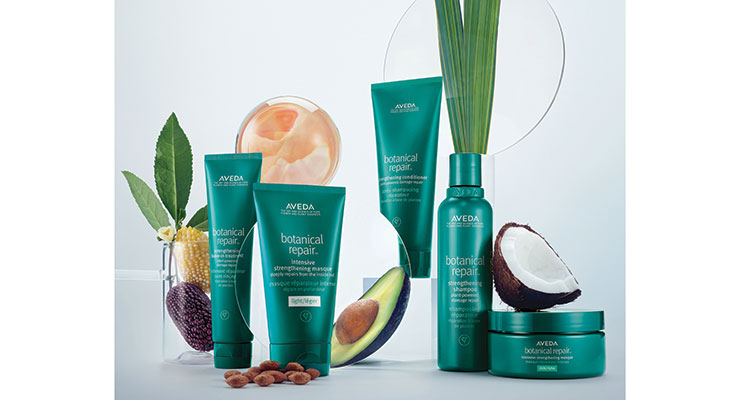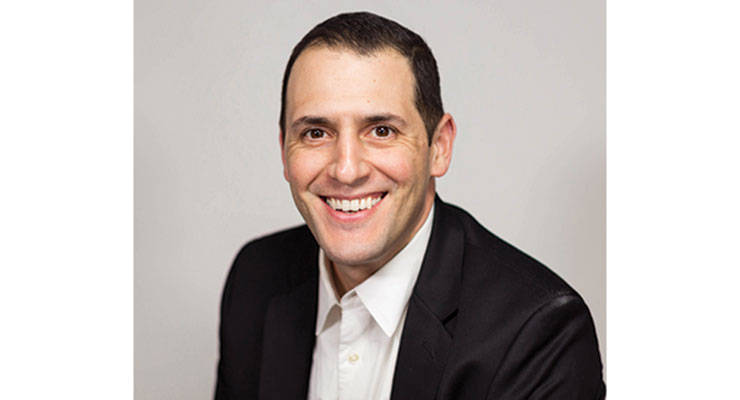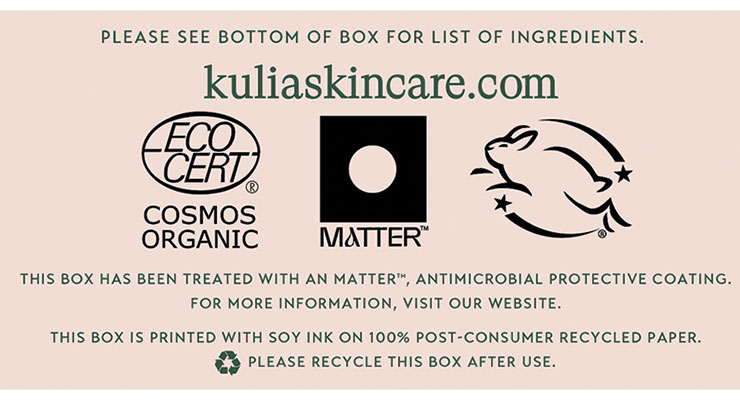Jamie Matusow, Editor-in-Chief11.30.20
Innovative Packaging in the beauty industry has always been thought of as the holy grail for marketing products from skin care to nail polish. While traditionally defined by newness or uniqueness, the term has become widely interpreted as everything from decorative techniques to dispensing systems, shapes, gestures and even “Instagram-able” appeal.
Currently, due to governmental rulings, global brands’ pledges, Indie brand DNA—and ultimately, consumer demand—sustainable packaging has worked its way to the top of the innovative terminology list.
Additional strides in Innovative Packaging currently include timely responses to Covid-19, through accelerated R&D and suppliers’ creative hands-free and hygienic offerings; and, with the surge in online shopping, an increased use of impactful technology that helps capture attention and desire as consumers scroll by.
In Research and Markets’ 2020 Packaging Innovation Trend Report, which looks at the latest trends in overall packaging innovations, including the format and materials of packaging, as well as the shift toward more sustainable options, analysts found that “sustainability has become a factor of great importance in the purchasing decisions of today’s consumer.
As individuals increasingly shift to lower and zero-waste lifestyles, questions surrounding materials used in packaging have become top-of-mind across various industries.” These shifts in regard to the health of the planet have turned attention to more eco-friendly alternatives including new forms of packaging.
How Sustianability Influences Innovative Package Development
Nearly all of the top innovative suppliers we spoke with for this article emphasized their drive toward sustainability and its overarching influence on a large portion of product development.At Roberts Beauty, Kristen Corso, director of marketing & product development, tells Beauty Packaging: “Sustainability has completely shifted our entire innovation strategy. There is always a conversation about how we can shift the design in a more eco-friendly direction for EVERY product.”
Benjamin Cohen, creative and innovation director, Knoll Packaging, says, “The extraordinary thing is that demand for sustainability and innovation drive each other. The more our brands have utilized our Knoll Ecoform pulp, the more we continue to innovate with the material. This has opened new doors for ways to look at packaging, for example how we can use digitized solutions to then educate the customer on how to recycle the package. The sustainability requirements also continue to evolve, especially as new legal requirements on plastics and new material developments emerge. The benefit is that these demands are creating momentum into a better future.”
Sustainability should always be at the forefront of any innovation moving forward, according to Asquan’s Michelle Wong, who says, “Customers have made this clear by demanding cleaner and greener beauty solutions in both product and packaging. Thus, the challenge we face is leaving a minimal footprint on the environment while designing effective packaging that protects the quality of our product, conveys the brand’s image, and provides more transparency to our consumers.”
This challenge is a shared responsibility according to Wong, who says Asquan believes brands and suppliers must work together to offer innovative solutions, and promote recycled and refillable packaging to work together toward greener strategies. She points out that today’s main challenge is to find the right balance between purposeful packaging and decorated packs. “There has to be a compromise in the brands’ willingness to minimize the excessive decoration and finishes on their packaging, as well as a commitment on the consumers’ end to educate themselves on proper disposal of parts to ensure proper end-of-life handling. We are constantly working on finding creative solutions toward that balance of a sustainable pack that upholds the aesthetic appeal we have all become accustomed to.”
Amid the pandemic, Asquan’s teams reimagined a color packaging standard design that could fulfill the crucial sustainability requirement. The new Parklane Collection seamlessly combines luxury aspects with sustainability features, according to Wong. She says the hinge construction allows for a prestige closure experience that “deceptively feels magnetic,” but involves no magnets at all. This collection has been designed in such a way as to keep the depth of the pans consistent while also being able to offer an optional refill possibility through a magnetic sheet addition.
In light of sustainability, HCT Group has streamlined their approach to packaging development. Megan Langdon, global director of design at the company, says, “The global industry movement to promote and encourage sustainable packaging solutions has really pushed our innovation team to revert back to the simplicity of objects and materials. We look for ways for brands and packages to have personality and identity through the use of new materials without over-packaging. Studying the process of waste and recycling systems has also helped us strive to design and educate on thoughtful and innovative solutions that consumers can identify as eco-driven.”
Brian Saputo, executive vice president of SeaCliff Beauty, believes that sustainability is an innovation in itself, and should be treated like one. He says one of the newest technologies he’s paying close attention to is chemical recycling, as “many of the big brands are partnering with the big chemical companies to develop and accelerate this work, as they can literally turn used plastic into like-new resin, in addition to unlocking billions of dollars of revenue while reducing our need for fossil fuel.” Saputo says he finds this to be very encouraging. “It’s a daunting goal to remove plastic from this world,” he says. “It has so many diverse uses and real value for many industries.
Chemical recycling is the type of innovation that can ‘challenge our beliefs’ about plastic and hopefully help close the loop and make garbage a useful commodity.”
At APC Packaging, Robert Bulla, director of engineering & innovation says demand for sustainability affects innovation in package development “a lot.” He says that defining innovation is imperative due to the fact, that “if our current design premise in general does not include innovation as a core attribute of your culture of design, sustainable design will be lacking in key attributes that bring about change.” To be called an innovation at APC Packaging, Bulla says, “An innovative idea must be replicable at an economical cost and must satisfy a specific need. By defining innovation, it will affect your relationship and your team’s relationship with the word creativity. I believe incorporating innovation into your culture by defining it will create a team that does not only look inside the box, but outside it as well.”
Beauty Brand Requests
Even amid the pandemic, as beauty brands continue their quest for innovative packaging, some suppliers say parameters have evolved to meet the current situation.APC Packaging’s Bulla sees this as a temporary trend, but says sustainability is still paramount. He says, “Many brands are still waiting to see what the new normal will be. If Covid packaging is launched, in many cases it has been an interim package.”
Corso of Roberts Beauty says skin care and “color cosmetics with benefits” continue to have strong interest. But she notes that muted color palettes have replaced strong, dramatic tones. “The eye category has increased in popularity due to mask wearing,” she says, and touch-less and antibacterial products are new product categories gaining strong momentum.”
At Asquan, Wong says, “Across the board, there is overwhelming demand for any and every sustainability solution.” Aside from that, she says it’s clear that traditional color brands are transitioning into the growing skin care space to offer the best of both worlds. “This brings requests for new and interesting delivery systems, including direct application in light of the Covid reality we’re all in now.”
Material and Technology Advancements
Kayla Villena, senior beauty analyst at Euromonitor International, in her report on Beauty and Personal Care Packaging in the U.S., says, “Innovation in beauty and personal care packaging will continue to be focused on development in sustainable packaging, with manufacturers expected to invest more in materials that are both recyclable and convenient, such as PET and HDPE rigid plastic.”For instance, Villena cites L’Oréal’s launch of SPICE (Sustainable Packaging Initiative for Cosmetics), in partnership with sustainability consultants, Quantis. She says, “The initiative already boasts members such as Estée Lauder, Coty and Avon, and other leading players are likely to join the push for environmental consciousness and sustainability-focused development in packaging.”
Beauty brands have kicked into high gear to implement innovative, sustainable packaging, emphasizes Knoll’s Cohen. He explains, “This has included using new sustainable materials, for example our Knoll Ecoform pulp as mono-material packing or as an alternative to thermoformed vacuum forms.” This year, says Cohen, Jo Malone made a significant step by moving multiple sets into this recyclable, biodegradable and compostable material.
Knoll also recently launched KnollLuxe Premium Board Platforms, which Cohen says is a newly developed recyclable and sustainable packaging solution. It features all finished edges and luxurious cavities to hold a product.
“The prestigious platforms can be seamlessly wrapped for decoration, with the most upscale appearance,” says Cohen. “We are thrilled that some of the leading global brands are moving away from plastic and EVA foam platforms into this recyclable and sustainable material next year.”
At HCT Group, Langdon describes the supplier’s just-launched newest innovation, Crimpless Tube Technology. These patent-pending tubes reinvent the typical sealing process by constructing a second header directly onto the opposing end. A capped seal replaces the traditional crimped end, which can be hidden inside, for a clean and unified look, or outside as a visible end cap that can be removable for refilling with product, or utilizing a second applicator. “We kept the flexibility of a traditional tube, but made it more functional,” says Langdon.
Roberts Beauty’s new Eco-Flow Brush combines the product and package in one convenient tool—and it’s refillable. “The convenience of a kabuki brush meets the delicate feel of an artistry brush in this new proprietary package,” says Corso. Powder stashes discreetly in the brush handle, an anti-splay sleeve protects bristles and an on/off feature keeps the package clean.
Many recent ICS beauty innovations have revolved around creating new sustainable initiatives for their packaging, says Eleanor Bunting, marketing manager—“promoting sustainable material alternatives such as our ICS exclusive biodegradable packaging, recyclable mono-material packaging, PCR packaging, glass, aluminum and bio-resin packaging, as well as more sustainable features for packaging such as refillable, reusable and double-duty.”
Bunting says ICS has seen an increased demand for glass packaging, “not only because of its formulation compatibility benefits but also because of its easily recyclable, sustainable material benefits.” Glass packaging is one of ICS’s key product categories and they recently developed ICS exclusive Boston Round Molded Glass Bottles and Molded Glass Jar. Their exclusive Boston Round Molded Glass Bottles are available in both 15- and 30ml sizes, ideal for product samples and full-size options, with standard neck sizes to fit various applicators, including droppers, pumps and sprayers for contaminant “touch-free” application. The ICS exclusive Molded Glass Jar has a 12.5ml fill and is an ideal mini size for various skin care formulations.
Innovation in Safety and Hygiene
As sustainable packaging witnesses a substantial increase in demand from personal care product manufacturers, researchers at Technavio report that there will be a continued rise in demand for miniaturized packaging for various products, such as shampoo and conditioners, with portable, on-the-go functionality.Euromonitor’s Villena says refillable packaging will become more prevalent across all beauty and personal care packaging categories, with fragrance packaging “holding considerable potential for further development in this area.”
In terms of dispensers and applicators, more players are expected to invest in solutions that give consumers increased control, particularly in fragrances, skin care, bath and shower and color cosmetics packaging. She says there is also potential in face mask packaging, with a move toward sustainable packaging of numerous single-sheet masks together, in a similar format to flexible packets of moist wipes.
Industry designers and suppliers agree on the increased interest in small sized and hygienic-conscious packages.
Bryce G. Rutter, Ph.D. and founder & CEO, Metaphase Design Group Inc., identifies two factors that can reinvigorate packaging innovation in the beauty industry going forward. “First and foremost, for the foreseeable future, Covid has changed our lives and how we think about the things we handle and touch to our face, in particular to our eyes and mouth,” says Rutter.
“So I think the first opportunity for innovation is for brands to reinterpret large dosing packages into single-use unit dose disposables that possess the same emotional and visual excitement as current hard reusable packaging. This design strategy eliminates the potential for cross-contamination, not unlike the design strategy we have been effectively using in the design of hospital disposables for decades.”
The second opportunity to reinvigorate packaging innovation in the beauty industry, according to Rutter, will be to bring the same level of “design fidelity” to the entire user experience (UX) that we see in other fast-moving markets such as consumer electronics. “In this case,” he says, “effective UX design means each and every touch point in the product ecosystem is purposely designed in a way to elicit the most effective user behavior and to project the most enjoyable user experience.”
The primary drivers, explains Rutter, include how a product feels, its Haptic Signature—does it feel exotic and luxurious or cheap?
Its Visual Signature—how does it look and how does it make users feel when they see it; does it look stunning and inviting or dated and ugly?
And its Acoustic Signature—how does it sound when in use; does it sound cheap or expensive?
These three sensory modalities, says Rutter, fundamentally shape the UX for any product—from the applicator and compact design, to the packaging it comes in, through to all digital footprints in apps, web portals, services and websites. “This holistic design strategy presents an opportunity to fundamentally change the rules of engagement with consumers.”
At SeaCliff Beauty, Saputo tells Beauty Packaging, “The biggest change we’ve noticed is the resurgence of samples and single-dose sizes as a way to improve hygiene. Before Covid, single-use packaging was on the way out. Regulations were increasing and many brands were looking at eliminating it as part of their sustainability efforts. Time will tell if this trend continues or if it was a more reactionary response to Covid.”
At ICS, Bunting, says, “Due to Covid-19, safety and hygiene are now also at the forefront of consumers’ minds when it comes to innovation. Beauty routines often involve touching multiple different packs and formulations before touching one’s face, but packaging with built-in applicators reduces this contact with hands-free application, to help keep the formulation, as well as your skin, contaminant-free, such as packaging with built-in brushes, doe foots or rollers.”
Bunting says they have also had increased requests from beauty brands for mini-size or mono-dose packaging to replace the in-store testers that consumers can no longer experience. The habits of testing a product before you buy have fundamentally changed and at ICS we have been specializing in sampling solutions for over 30 years, offering a variety of mini size options to full size packaging, for a variety of categories from bottles to jars, lip-gloss to mascara, pumps to tubes and more. ICS’s experience has given us the agility and flexibility to adjust to fast-paced changes in consumer demands which is key to staying at the forefront of innovation within the beauty industry.”
Asquan’s Essential Stick has a variable and convenient fill weight capacity of 4-8g (small) and 8-12g (large) with airtight function. It is a versatile top-fill design that accommodates a range of formulation possibilities, says Wong, particularly those with volatiles or high water content, that offer a higher comfort level with sanitary concerns now at the forefront of many consumers’ minds. Wong adds, “With ongoing demand for hygienic solutions, direct application sticks are the natural way to go in the current climate to reduce cross contamination risks between product, hands and face.” She says the Airtight Essential Stick is an ideal quick-to-market solution that checks all the relevant boxes in today’s cautionary landscape.”
Livcer, known for innovative dose sampling for cosmetics—and represented in the U.S. by SGB Packaging Group—says they are an eco-responsible company “committed to making our product packaging and filling operations as ecological as possible, from the industrial design stage of the packaging right up to product delivery.” Various solutions for eco-friendly packaging include aluminum-free eco-responsible alternative, single-material complexes for easy recycling or recycled materials (up to 50%). Livcer says their goal is 100% recyclable-ready or based on recycled plastic packaging by 2025.
Innovation Geared to Online Shoppers
Is innovation currently more geared toward online shoppers? If so, what is different about innovation based mostly on a digital market—without the ability to touch, feel or smell? How is innovation in packaging different for on-screen viewing?In a recent report, in which Technavio predicted that the personal care packaging market is expected to grow by $3.91 billion during 2020-2024, researchers also concluded that “a rising need for innovative packaging will have a positive impact on the market and contribute to its growth over the forecast period, as it helps attract consumers through visual appeal, and helps to highlight the brand.”
Research from IBISWorld points to the increased popularity of social media platforms—which emphasizes the importance of the color, texture and packaging of products—and says “operators are expected to continue investing in research and development to formulate new and innovative products with a special emphasis on products that photograph well.”
At SeaCliff Beauty, Saputo says they have seen some changes in this area. “We just started on a new project and it was critical to the brand that their logo shows from several angles. “They wanted to ensure that the packaging was easy to photograph and promote on social media. Instagram has become the new store shelf.”
Erma Estrella, senior director, product sales & product development, HCT Group, tells Beauty Packaging: “I think this is where social media comes into play for a lot of clients—showing visuals of how to dispense and/or apply product as well as providing marketing descriptions and video tutorials or visuals to better showcase an innovation. Specifically, from an innovation perspective at HCT, we send out newsletters that specifically feature innovations as well as videos to make the product come to life.”
At APC Packaging Bulla says, “First and foremost, our team has ensured what design aspects are required for online selling. For our new ARS refillable airless, we made sure the refill will meet ISTA requirements. We will see if the increase in online shoppers holds after normalcy returns.”
Bunting from ICS, agrees. “The beauty market is mostly a sensorial one and without the in-store ability of touch, feel or smell, packaging will need to rely on visual aspects to stand out online. Minimalist packaging has been the trend of the past couple years, saturating the packaging market, but more unique visual aesthetics to packaging may need to take the reins in this new digital era to catch consumers’ eyes. Fun, colorful, playful packaging that makes consumers smile will provide brands with the chance of on-screen innovation to generate consumer purchases.”
Adapting consumer shopping habits will gear the digital market towards the promotion of more sample-size products, says Bunting. “Consumers will be looking for more mini size and tester options available online to replicate the in-store shopping experience and provide the opportunity to try a smaller-size product for their initial purchase, since the normalcy of trying out testers in stores is no longer an option,” she says.
Guerlain’s customizable Stunning Gems Collection designed for its iconic Rouge G lip color is bound to capture attention online—as well as on-counter with its striking choice of accessory-like jewel-inspired double-mirror cases—four faceted and four covered in 1000 reflective sparkles. Just select the shade and finish you prefer, choose a case and pop in your lipstick of choice.
A Technical Feat
Online or in-person, innovative packages in the beauty industry can be utter knockouts. Knoll Packaging created this new coffret for the launch of the Soleil Lalique Crystal Edition Perfume Flacon, an ultra-exclusive limited edition of 20 signed and numbered 1500ml sun-shaped crystal flacons. The design imagined by the Lalique House is an “exceptional masterpiece,” an oval-shaped metal coffret sprayed in the Living Coral and Gold colors of Soleil Lalique.According to the luxe brand, “the fascination starts with the discovery of the gold sunrays from the round gold plaque on the outside lid. Once the lid is removed, the coffret opens like a fan to reveal the flacon, mirrored by a gleaming backdrop of Art Déco-style sunrays in shiny gold, matte gold and shiny silver.” The overall coffret is lined with suede-finish coral fabric and creates a perfect finish when the Crystal Flacon is displayed.
According to Knoll’s Cohen, “the coffret’s specific shape and spectacular size make this masterpiece another highly sophisticated case in the history of perfumery.” The opening system with the deployment of the two wings, was a long engineering effort due to the heavy weight of the doors. The variety of materials—steel, wood, mirror and fabric combined—required several color-matching tests and prototype developments.
This creation is the result of 18 months of intensive collaboration between the Lalique and Knoll Packaging teams, including 12 months of technical development and color matching.
Digitized Packaging Solutions
The beauty industry has also seen a noticeable rise this year in innovative, digitized packaging solutions.Cohen says Knoll Packaging sees sustainability and digitized packaging to be the leading forces driving innovation in every aspect of packaging. “Covid-19 has significantly accelerated the need for brands to connect with their customers on a personalized level including digital in-store experiences, sustainability information, product demos and more. This evolution is a more integrated approach, so our packaging can actually create a meaningful connection and help tell the brand sustainability story though technology,” he explains.
“We have seen a tremendous amount of demand for our digitized packaging solutions, including QR, AR and NFC technologies,” says Cohen. “This innovation growth has been a direct result from the increase of online shopping. It is a chance for us to help brands re-create in-store experiences, provide AR try-on opportunities and connect directly with the customer all through their device and packaging.” He says they are looking to use these tools to help their brands close the gap between what had been traditionally considered online and offline experiences.
A new “cyber fragrance” highlights many of today’s “musts” in cosmetics packaging—from innovation to climate control.
From the German studio LOOK LABS, Cyber Eau De Parfum claims to be “the first fragrance with sustainable printed electronics and a clear environmentally friendly message,” as well as “the first unisex fragrance with an illuminated label, embedded printed electronics and a strong focus on sustainability.” The product combines German state-of-the-art technology with traditional perfume-making traditions from Grasse, France.
LOOK LABS founder Jordan Katzarov says he wanted to create “the ultimate luxury fragrance that combines traditional craftsmanship with the latest disruptive technology. Choosing the highest quality ingredients and materials was an imperative step in the process of designing and crafting a product that is unique and the first of its kind on the market.”
Katzarov says the printed electronics technology was used “to make the product resonate with the new generation of smart, tech-savvy, and environmentally conscious consumers.” The label, cap and outer packaging are sustainable and the perfume bottle is refillable.
When you press the power button on the label, the name CYBER in dark-grey, almost black, lights up in a bright red light. “The universal recycling and earth symbols blinking in red act as a reminder that we should protect our planet and pay more attention to our environment. The design and functionality of the label is to draw attention to the immediate climate crisis and environmental issues,” says Katzarov.
The perfume retails for €240/$280 and refills are available.
The Future of Innovative Cosmetics Packaging
What will cosmetic packaging look like going forward, post-Covid? Where will the crux of innovation lie?HCT Group’s Langdon believes, “The charge and the directive is clearly for the industry to strive for sustainable solutions. This is a question and a goal that is not going anywhere, so our goal is to redefine the approach to packaging and its lifecycle.”
ICS anticipates that future cosmetic innovation “lies in the perseverance of sustainable packaging, especially mini and mono-dose packaging that will be more commonly used due to increased hygiene standards and that are commonly thrown away after short use,” according to Bunting. She adds, “Development of protective packaging such as antimicrobial treatments and/or properties will also be on the rise with increased hygiene standards because of Covid-19.”
Corso, at Roberts Beauty, thinks “petite products” is a category to watch. “Minimal packaging combined with a formula size that the consumer is expected to cycle through quickly, this product type also supports the refillable features that many packages are now offering.”
Read More: How Top Cosmetic Packaging Suppliers Define ‘Innovation’
Sidebar
Aveda's Botanical Repair: New Heights for Sustainable Packaging
During the height of the pandemic, Aveda brought the salon experience to the DIY consumer with Botanical Repair, a new ‘revolutionary’ at-home and professional collection, whose five products rely on plant-powered technology to strengthen and repair hair. The range, which was six years in the making, exceeded the environmentally responsible brand’s previous achievements with sustainable packaging.Edmond Irizarry, executive director, package development, Aveda, says: “We set a goal for Botanical Repair to elevate everything we have done to date from a sustainable packaging point of view. With Botanical Repair, we were able to achieve 100% PCR not only in our bottles and jars but also in their respective caps.
This is a first for Aveda while ensuring color consistency across the multiple PCR materials (PET, HDPE and PP). Finally, with Botanical Repair we are introducing plastic tubes that have been certified as ‘Recyclable Ready.’ That is why, when we reference Botanical Repair, we think of this franchise as ‘The Culmination of our Mission!’ ”
Sidebar
Kulia Brand Launches Hygienic Cartons
With the dramatic rise in online sales, and more attention being paid to hygienic packaging and un-boxing, Kulia, a newly launched organic skin care brand based in Hawaii, has incorporated an antimicrobial, aqueous coating onto its cartons.Designsake Studio worked on the brand identity and packaging design, using recycled glass, Neenah’s FSC-certified paper stocks, and soy-based inks to ensure each layer of Kulia’s packaging reflects the brand’s sustainability values. However, one additional consideration for the packaging was safety.
Designsake owner, Danielle McWaters, says, “We know the risk of disease transmission from surfaces is real, but it took a global pandemic for companies and consumers to realize the actual vulnerabilities of high-touch surfaces, explicitly packaging. Simultaneously, Covid-19 has ushered in a rapid acceleration of e-commerce growth and brought entire industries like CPG companies online. As a studio, we kept asking ourselves, ‘How are brands cultivating this new, invaluable relationship with customers and meeting their demands for safer delivery of products?’ And what precisely does this mean for packaging as a communication tool for companies? It was at this point, we found Matter,” a new platform created by Designsake Studio as a way for brands “to easily adapt packaging standards to ensure both safety and sustainability.”
McWaters describes Matter as an antimicrobial, aqueous coating that protects against 99.9% of microbes, including bacteria, fungi, and viruses.” Because Matter applies as an invisible coating (on a variety of materials), McWaters says it does not compromise the integrity of a product’s aesthetic or functionality, and can be quickly integrated into a company’s existing packaging in the final steps of the print production process.

